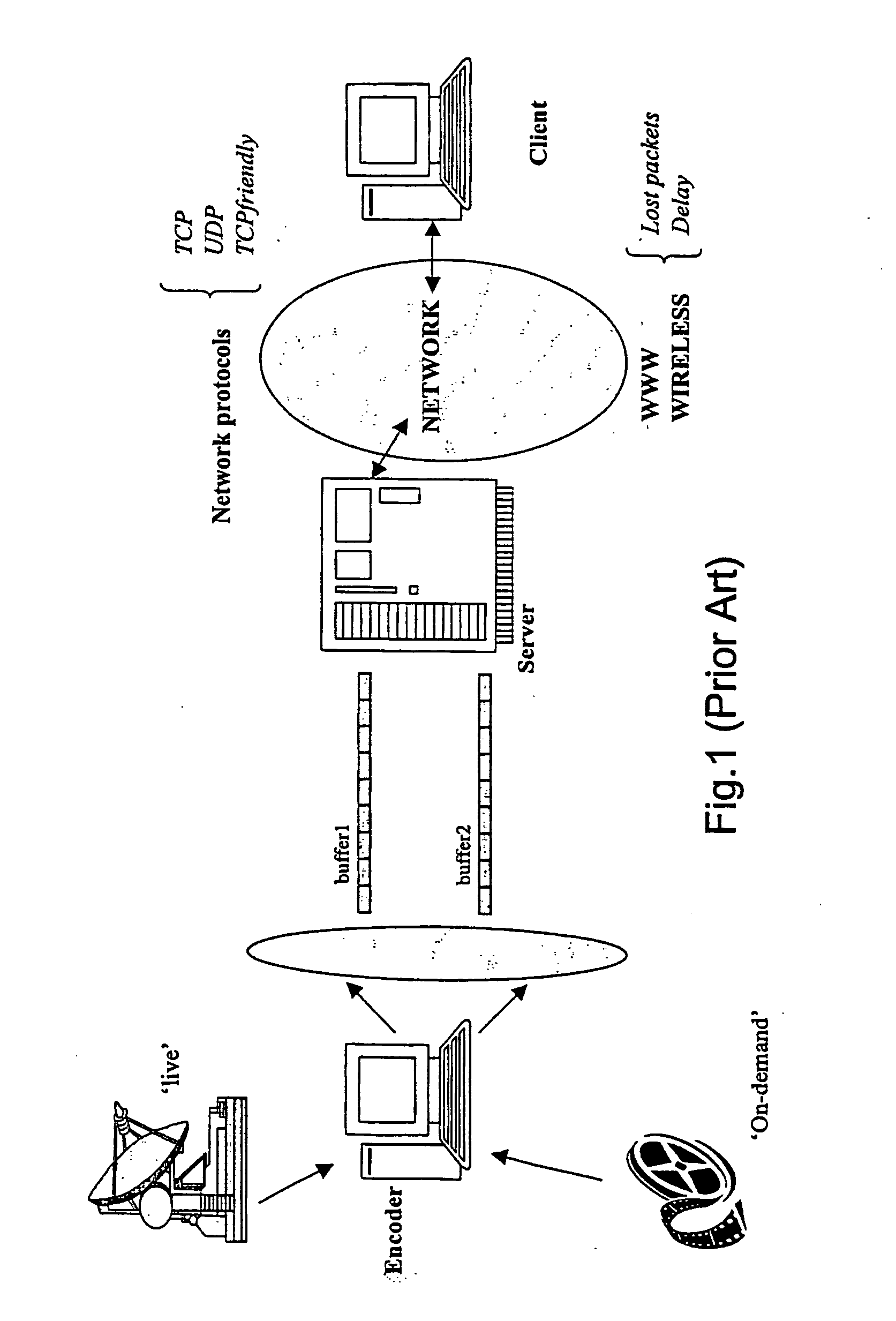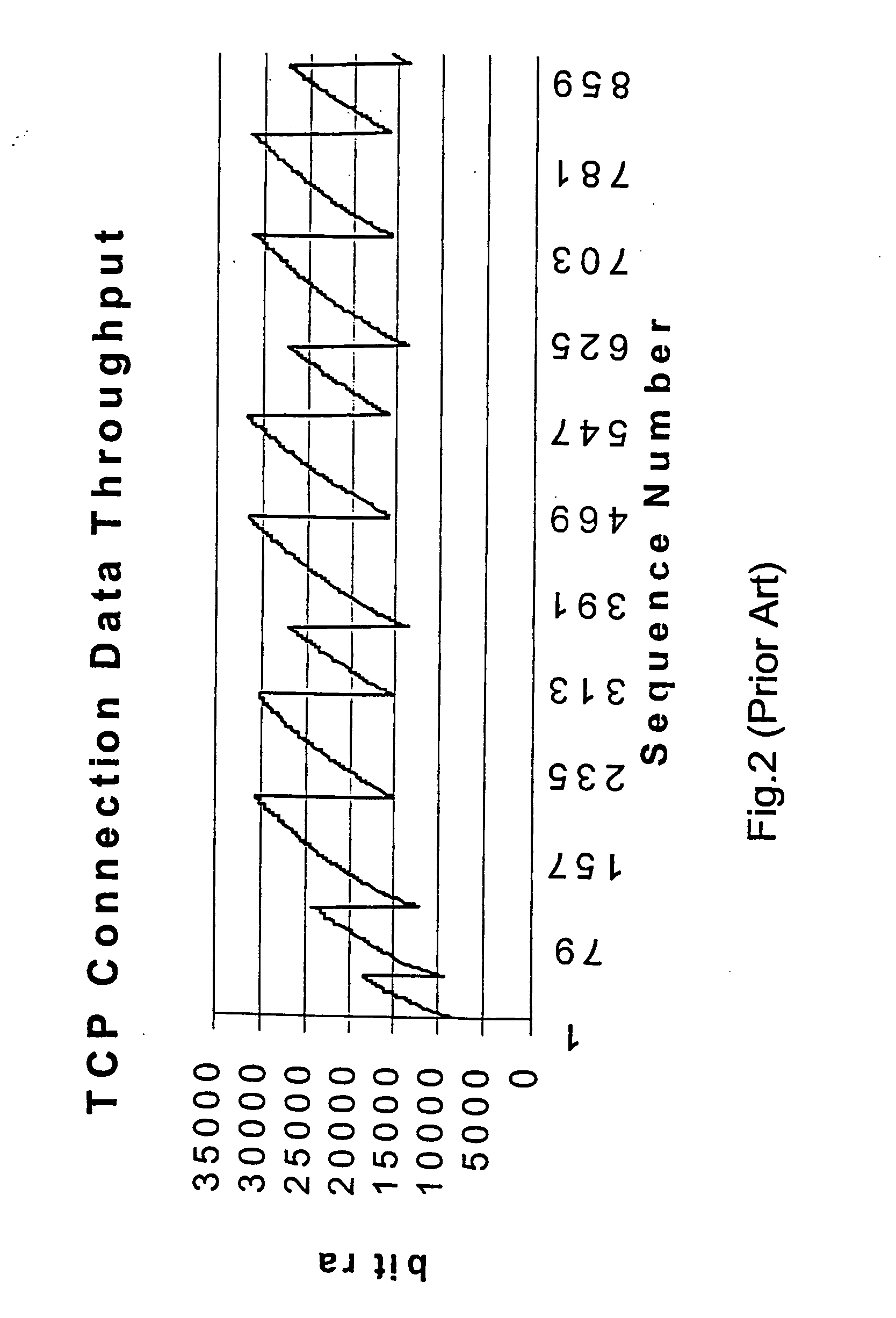Data communications method and system using buffer size to calculate transmission rate for congestion control
a data communication and buffer size technology, applied in the field of data communication methods and systems, can solve problems such as packet loss and thus data loss, no quality of service control mechanism nor the ability to permit, and contribute to network congestion
- Summary
- Abstract
- Description
- Claims
- Application Information
AI Technical Summary
Benefits of technology
Problems solved by technology
Method used
Image
Examples
first embodiment
A first embodiment of the present invention will now be described with respect to FIGS. 6 to 10. The first embodiment is particularly concerned with sending one or more independent streams to the same or different clients, and controlling the transmission rate of the stream in a closed-loop manner.
FIG. 6 is a flow diagram of the steps performed by the server computer 40 in accordance with the first embodiment of the present invention. Firstly, at step 102 the sending rate calculator 46 calculates the total bandwidth available for the individual data streams which are to be transmitted from the server computer 40. This value max_rate represents the upper limit on transmission rate which the transmission rates of each separate data stream should not be exceed. The value max_rate is calculated in accordance with the following principles.
Typically, previous multimedia conferencing applications presently used in the Internet are based on the UDP transport protocol, which as previousl...
second embodiment
The operation of a second embodiment of the present invention will now be described with reference to FIGS. 8 to 13. The second embodiment of the invention is particularly concerned with sending more than one data stream to the same client, and in particular with sending simultaneous real-time audio and video data in separate audio and video data streams. Furthermore, as with the first embodiment the second embodiment is also concerned with controlling the transmission rate of the stream in a closed-loop manner
FIG. 11 is a flow diagram of the steps performed by the server computer 40 in accordance with the second embodiment of the present invention. Firstly, at step 2 the sending rate calculator 46 calculates the total bandwidth available for all of the individual data streams which are to be transmitted from the server computer 40. This value total_rate represents the upper limit on transmission rate which the individual transmission rates of each separate data stream when summed...
third embodiment
A third embodiment of the present invention will now be described. The third embodiment is particularly concerned with sending one or more independent streams to the same or different clients, and controlling the transmission rate of the or each stream in an open-loop manner.
The previously described embodiments related to closed-loop control systems, wherein information received from the client was used at the server to control the transmission rate. Within the third embodiment, however, open-loop control is performed, by virtue of the server keeping track of the packets that it has sent to the client in the or each data stream, and making an estimate of how much space is left in the client's buffer using a priori knowledge of the client buffer size (S) in bytes, the amount of static buffering the client would undertake before starting to read the received data from the buffer, and the rate at which data would be read from the buffer. The server can then keep a constantly updated...
PUM
 Login to View More
Login to View More Abstract
Description
Claims
Application Information
 Login to View More
Login to View More - R&D
- Intellectual Property
- Life Sciences
- Materials
- Tech Scout
- Unparalleled Data Quality
- Higher Quality Content
- 60% Fewer Hallucinations
Browse by: Latest US Patents, China's latest patents, Technical Efficacy Thesaurus, Application Domain, Technology Topic, Popular Technical Reports.
© 2025 PatSnap. All rights reserved.Legal|Privacy policy|Modern Slavery Act Transparency Statement|Sitemap|About US| Contact US: help@patsnap.com



